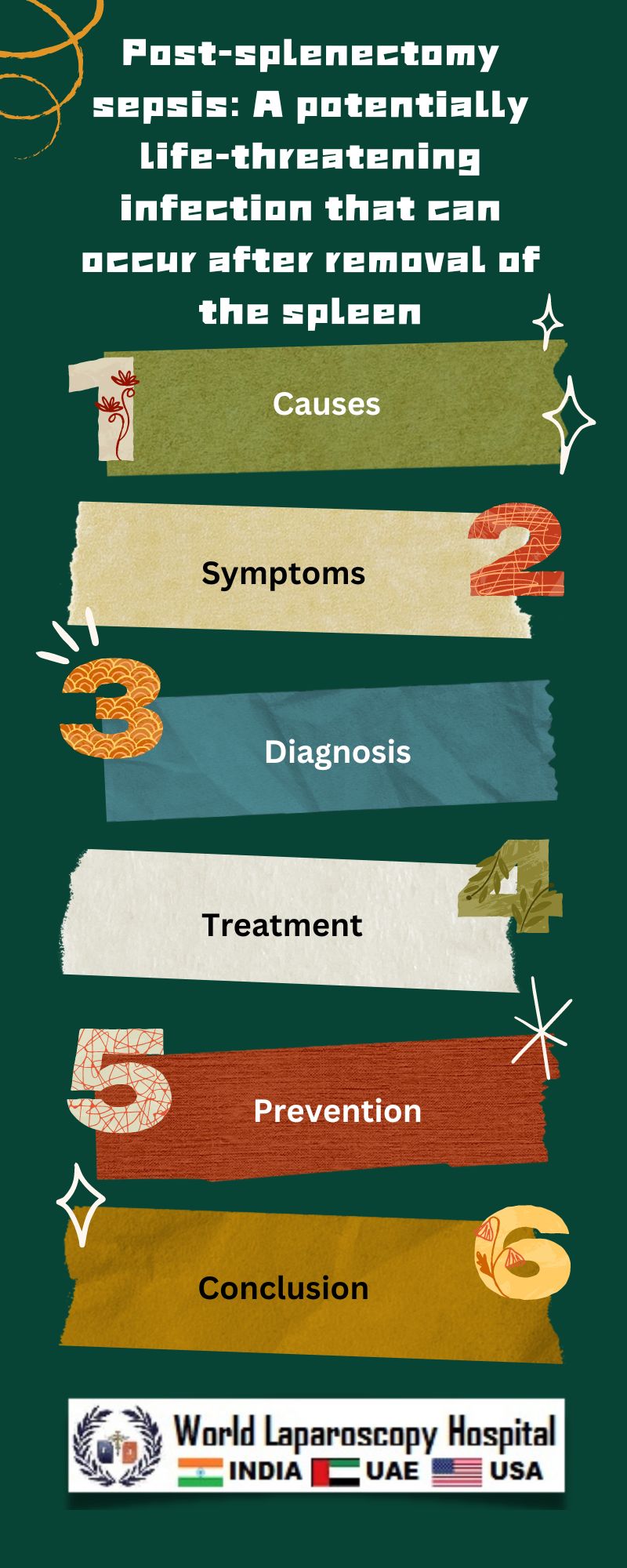Post-splenectomy sepsis is a rare but potentially life-threatening condition that can occur after the removal of the spleen, known as splenectomy. The spleen plays a crucial role in the immune system, helping to fight infections and filter out old or damaged red blood cells. When the spleen is removed, either due to trauma or disease, the body's ability to fight certain infections is impaired, increasing the risk of developing sepsis.

Sepsis is a severe infection that can lead to tissue damage, organ failure, and death if not treated promptly. In post-splenectomy sepsis, the risk is particularly high because the spleen's absence leaves the body more vulnerable to certain types of bacteria, especially encapsulated bacteria such as Streptococcus pneumoniae, Haemophilus influenzae, and Neisseria meningitidis.
The incidence of post-splenectomy sepsis varies depending on the underlying reason for splenectomy. For example, individuals who have had their spleen removed due to trauma or certain medical conditions, such as sickle cell disease or certain types of cancer, are at higher risk.
Symptoms of post-splenectomy sepsis can be similar to those of other types of sepsis and may include fever, chills, rapid breathing, rapid heart rate, and confusion. However, individuals who have had a splenectomy should be particularly vigilant for these symptoms and seek medical attention immediately if they occur, as the condition can progress rapidly.
Preventing post-splenectomy sepsis is a critical aspect of managing patients who have had a splenectomy. Vaccination against encapsulated bacteria, including pneumococcus, Haemophilus influenzae type b (Hib), and meningococcus, is recommended both before and after splenectomy. Additionally, patients should receive education about the signs and symptoms of infection and the importance of seeking prompt medical attention if they occur.
Treatment of post-splenectomy sepsis typically involves antibiotics to target the specific bacteria causing the infection. In severe cases, hospitalization may be necessary, and supportive care, such as intravenous fluids and oxygen therapy, may be required to stabilize the patient.
In conclusion, post-splenectomy sepsis is a rare but serious complication that can occur after the removal of the spleen. Patients who have had a splenectomy should be aware of the increased risk of infection and take steps to prevent it, including vaccination and prompt treatment of any signs of infection. With proper management, the risk of post-splenectomy sepsis can be minimized, and patients can lead healthy, active lives after splenectomy.